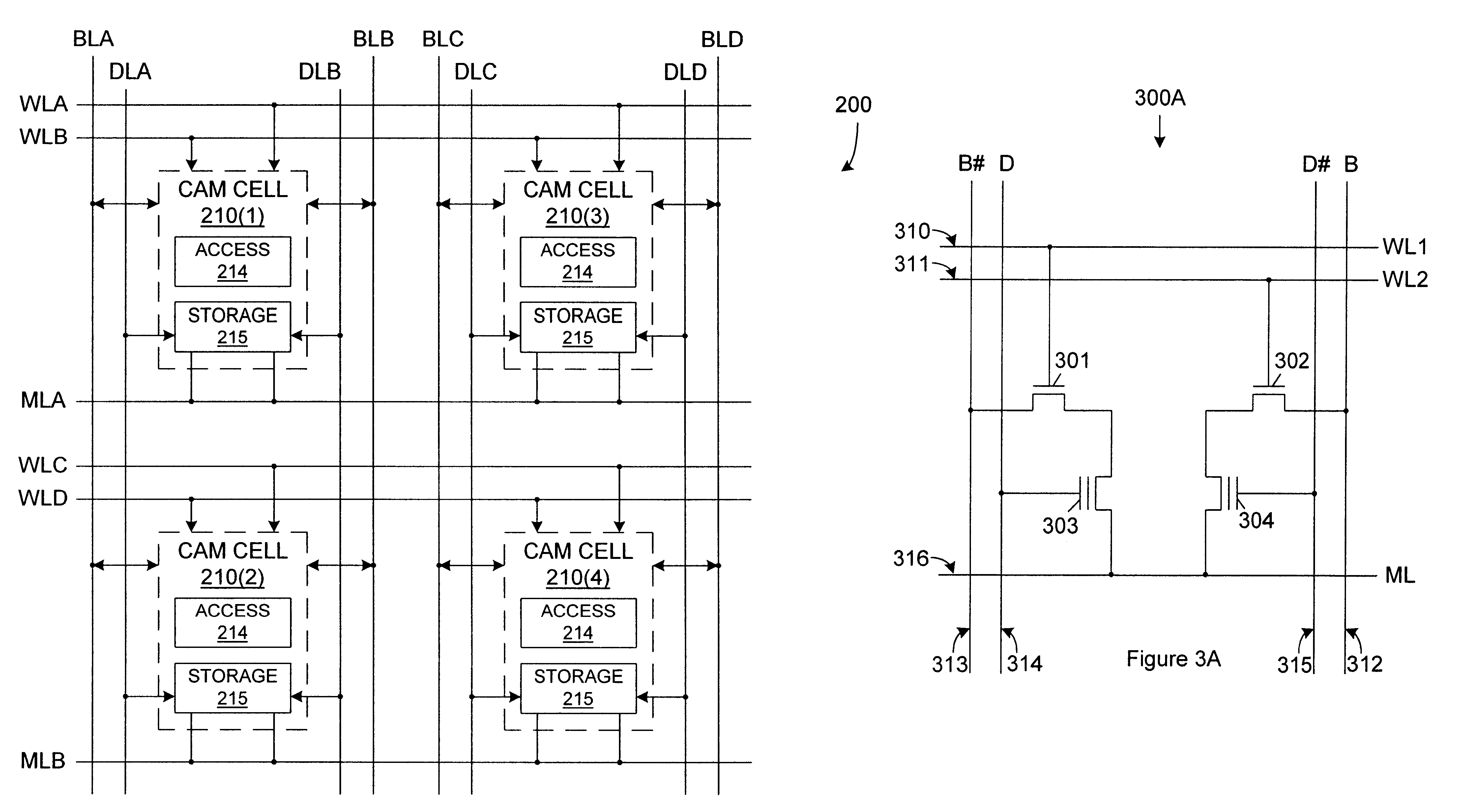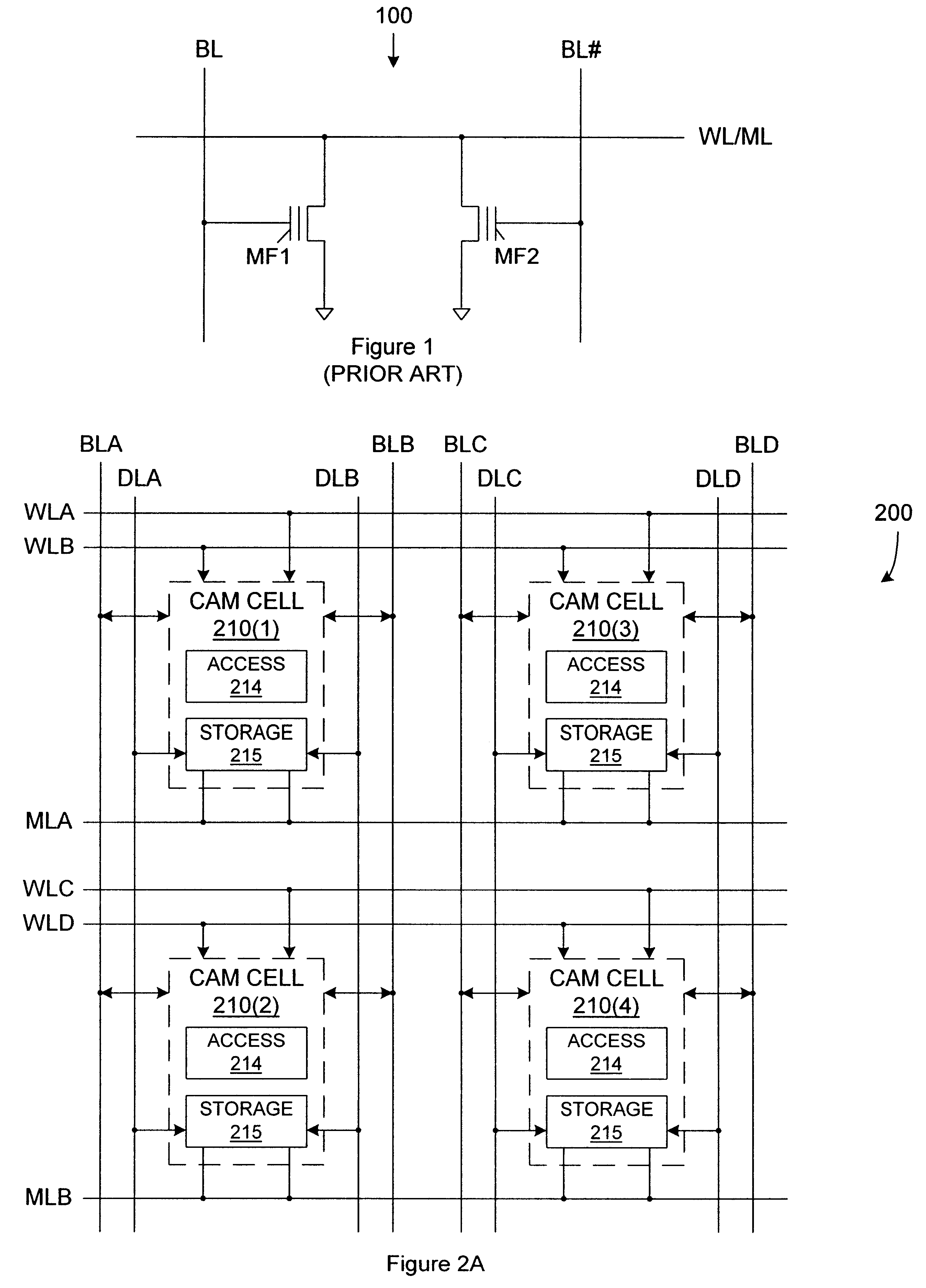Cam array with minimum cell size
a technology of ram arrays and cell arrays, applied in the field of random access memory arrays, can solve the problems of difficult to read from non-volatile transistors mf1-mf2, difficult to read this array, and a relative large amount of time is required to read
- Summary
- Abstract
- Description
- Claims
- Application Information
AI Technical Summary
Problems solved by technology
Method used
Image
Examples
Embodiment Construction
4T Non-volatile CAM Cell
FIG. 3A is a schematic diagram of a novel four-transistor non-volatile ternary CAM cell 300A in accordance with an embodiment of the present invention. Ternary CAM cell 300A includes n-channel transistors 301-302 and non-volatile transistors 303-304. Transistors 301-302 have first terminals coupled to the first terminals (e.g., drains) of transistors 303-304, respectively. Word lines 310-311 are coupled to the gates of transistors 301-302, respectively. An inverted bit line 313 is coupled to a second terminal of transistor 301. A bit line 312 is coupled to a second terminal of transistor 302. A data line 314 is coupled to a gate of transistor 303. An inverted data line 315 is coupled to a gate of transistor 304. A match line 316 is commonly coupled to the second terminals (e.g., sources) of transistors 303-304.
The operation of ternary CAM cell 300A will now be described. During normal operation, CAM cell 300A is placed in various conditions, including standby...
PUM
 Login to View More
Login to View More Abstract
Description
Claims
Application Information
 Login to View More
Login to View More - R&D
- Intellectual Property
- Life Sciences
- Materials
- Tech Scout
- Unparalleled Data Quality
- Higher Quality Content
- 60% Fewer Hallucinations
Browse by: Latest US Patents, China's latest patents, Technical Efficacy Thesaurus, Application Domain, Technology Topic, Popular Technical Reports.
© 2025 PatSnap. All rights reserved.Legal|Privacy policy|Modern Slavery Act Transparency Statement|Sitemap|About US| Contact US: help@patsnap.com



